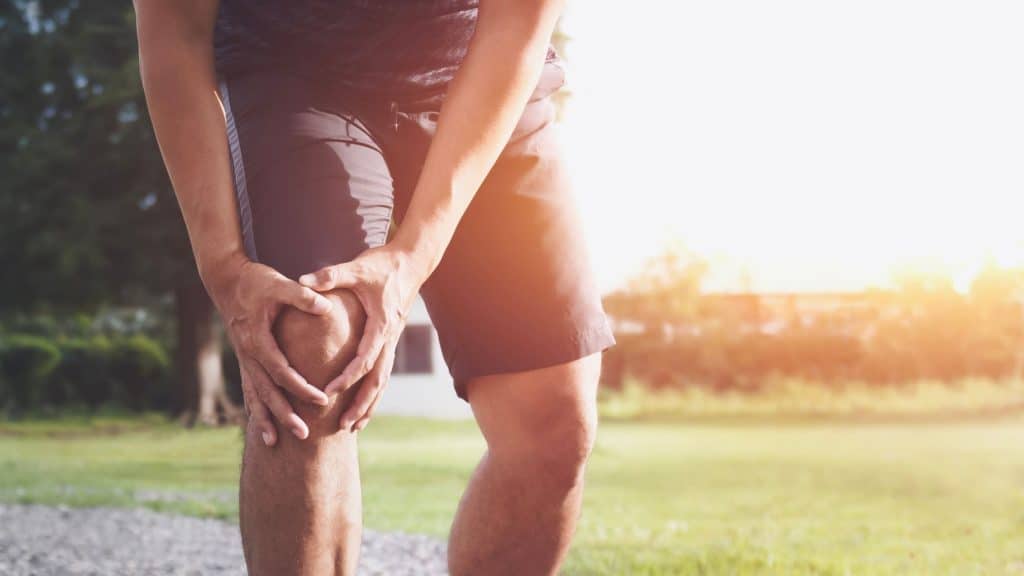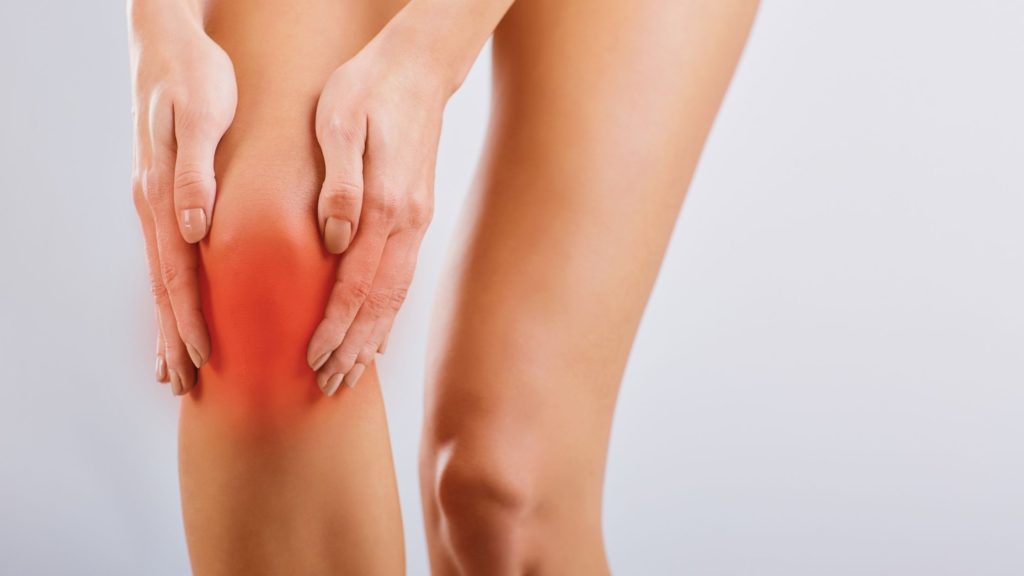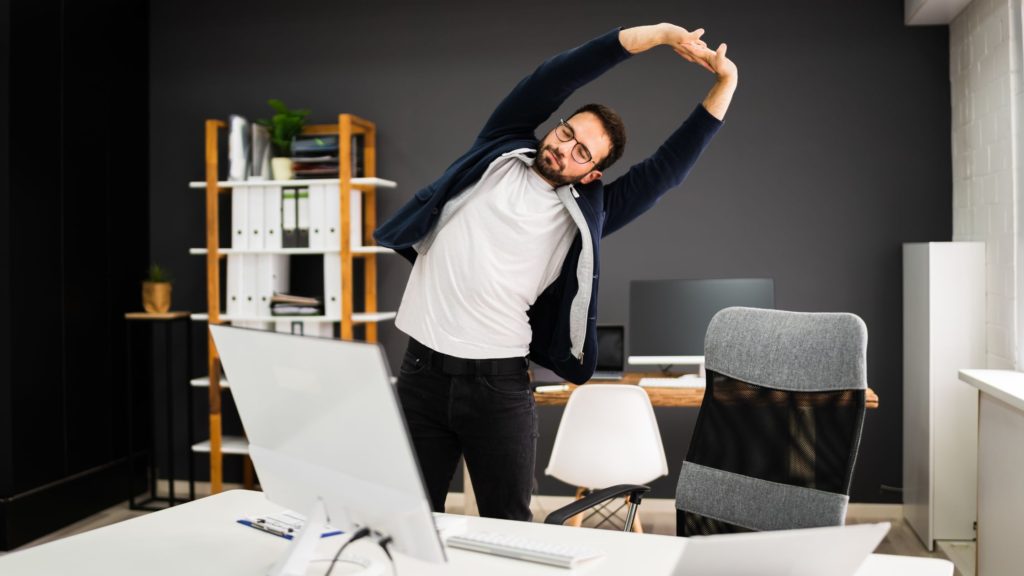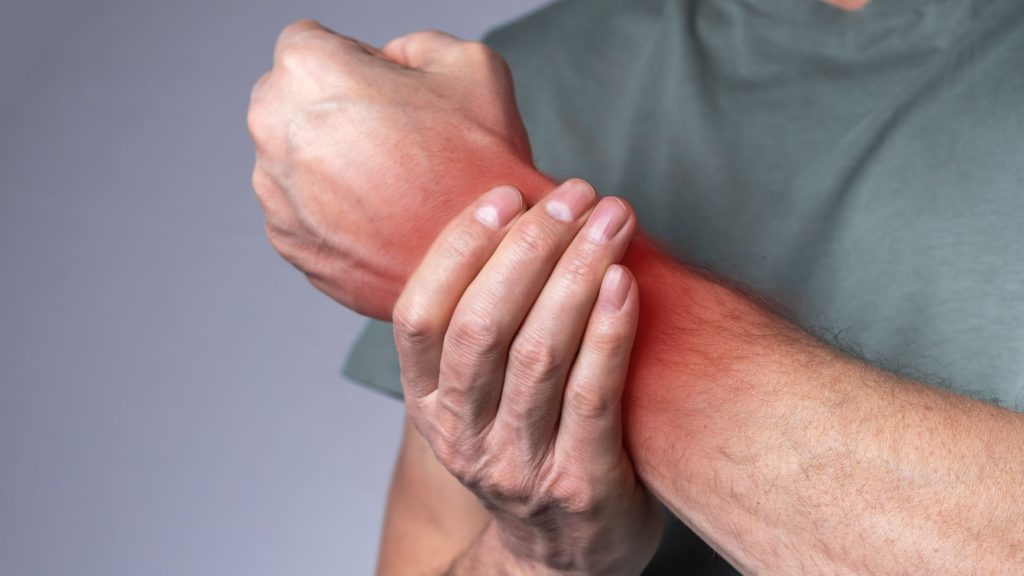Last updated on February 25th, 2025 at 12:42 pm
- Bunions are a common and often painful foot condition that can affect anyone.
- Bunion corrector exercises are a non-invasive way to alleviate pain and discomfort associated with bunions.
- These exercises can help improve flexibility, strengthen muscles, and increase circulation in the affected area.
- Regular practice of bunion corrector exercises can also prevent the progression of the condition and improve overall foot health.
If your big toe abnormally leans inward towards the lesser toes, forming a bump on the base of the big toe, then chances are it can be a foot deformity named bunion or Hallux valgus.
It looks odd and can cause foot pain that can drastically affect the walking pattern and cause an imbalance in standing and walking.
The exact cause is not specific, and multifactorial disease is thought to be the cause. But, it is frequently associated with the wrong choice of footwear.
In addition to exercises, Hallux valgus orthosis or footwear modifications are equally effective. However, certain cases don’t respond to conservative management and may require surgical construction.
In this article, we will try to understand the symptoms of a bunion, what causes it, and how we can manage it through exercises. We will also touch on other conservative management, but the centre of this article will be the exercises.
What is a bunion? It’s anatomy
The medical term for a bunion is Hallux valgus. It is the most common foot structural deformity in which there is an angular deviation of the great toe towards lesser toes, and angular deviation is more than 15 degrees with respect to the first metatarsal 1.
Because of bending, the base of the big toe looks protruded; with time, the overlying skin becomes inflamed and swollen, making a bump at the base. The soft-tissue prominence is painful and affects walking.
Hallux valgus significantly negatively impacts health and quality of life and can cause foot pain, poor balance when standing or walking, immobility, and risk of a fall injury3.
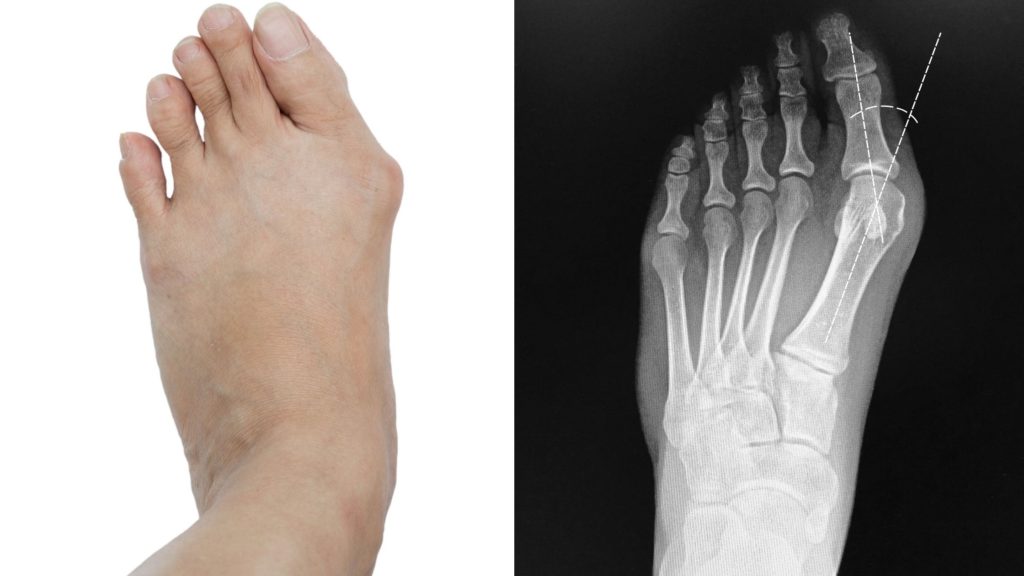
What are the causes of bunions?
It frequently affects females and older individuals. The exact cause is not known, but here are some factors that can result in hallux valgus.
- Bunions can be genetic, so if your family members have them, you may be more likely to develop them too.
- A Boston study found that women with low body weight or low BMI are more prone to getting Hallux valgus, while men with high BMI are more likely to develop it1.
- Footwear usage is also linked to Hallux valgus, with wearing shoes causing stress on the great toe, leading to the condition4.
- Women who wear high heels between the ages of 20-64 have a higher chance of developing bunion deformity.
- Regularly using pointed shoes has also been connected with developing a bunion5.
Foot exercises for bunions
Foot pain caused by a reduction in physical activity can be reduced by strengthening certain muscles in the foot and calf. A study 2 identified five key muscles that play an important role in supporting our body weight and maintaining the medial arch of the foot.
Exercising and strengthening these muscles is important for bunion correction. Simple exercises can be done at home while sitting on a flat stool.
1. Short foot exercises for Hallux valgus correction
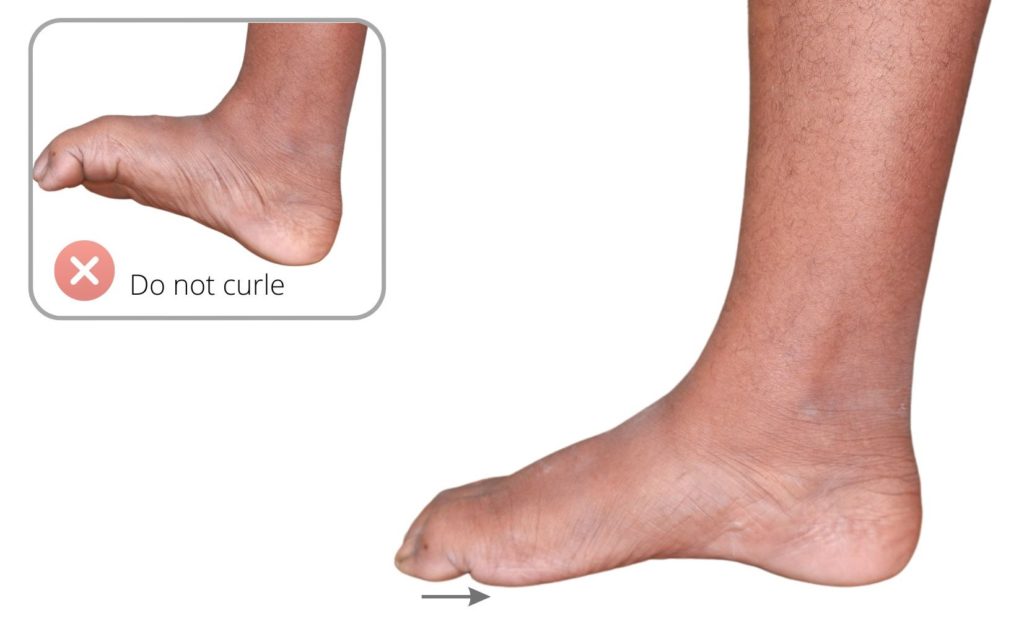
Short foot exercise aims to improve the height of the medial arch. The medial arch is on the medial side of the foot, and we have extensively discussed it in one of our previous articles.
You can visit it and read that article. So, the short foot exercise is very easy, but it is also straightforward to do it incorrectly.
- So, for this bunion exercise, our starting position would be sitting, and our feet would be flat on the floor.
- Now, shorten your foot. To do this, bend your toes without curling them. The easiest way to do this is to press the ball of your toes onto the floor and hold it for five seconds.
- By doing this, you can increase the height of your arch and strengthen the muscles on the plantar aspect of your foot, which will help improve the arch.
- Remember, pressing your toes on the floor is sufficient, and curling them is unnecessary.
You can watch this video for more clarity. So repeat this exercise till you feel aching or tiredness around the foot muscles; however, 10 to 15 times is the minimum reputation you should always perform.
2. Toe spreading bunion corrector exercises
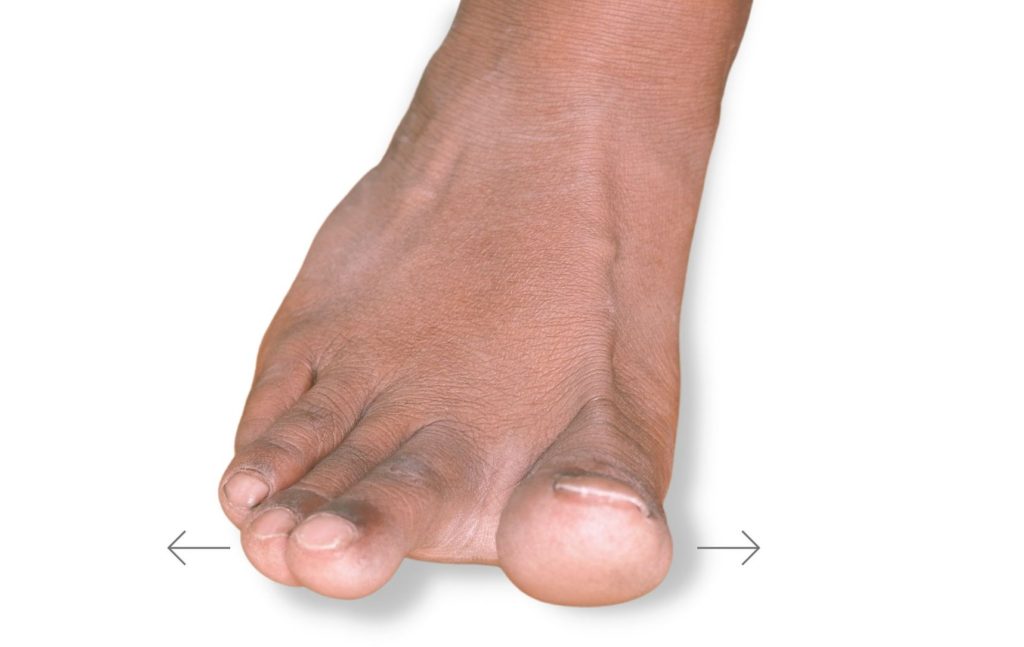
- To perform the toe-spreading exercise, keep your foot flat on the floor.
- Now, raise your toes and spread them apart as far as possible. While doing this, ensure that your heel and the front of your foot remain flat on the floor, and only your toes should stretch outward.
- Hold this position for 5 seconds, then release and return your toes to their normal position.
- Repeat the process, spreading your toes as wide as possible, holding this position for 5 seconds, and bringing them back again.
- Continue doing this exercise until you feel aching or tiredness around your foot, but do it at least 10 to 15 times in a single session.
3. Heel off foot bunion exercises
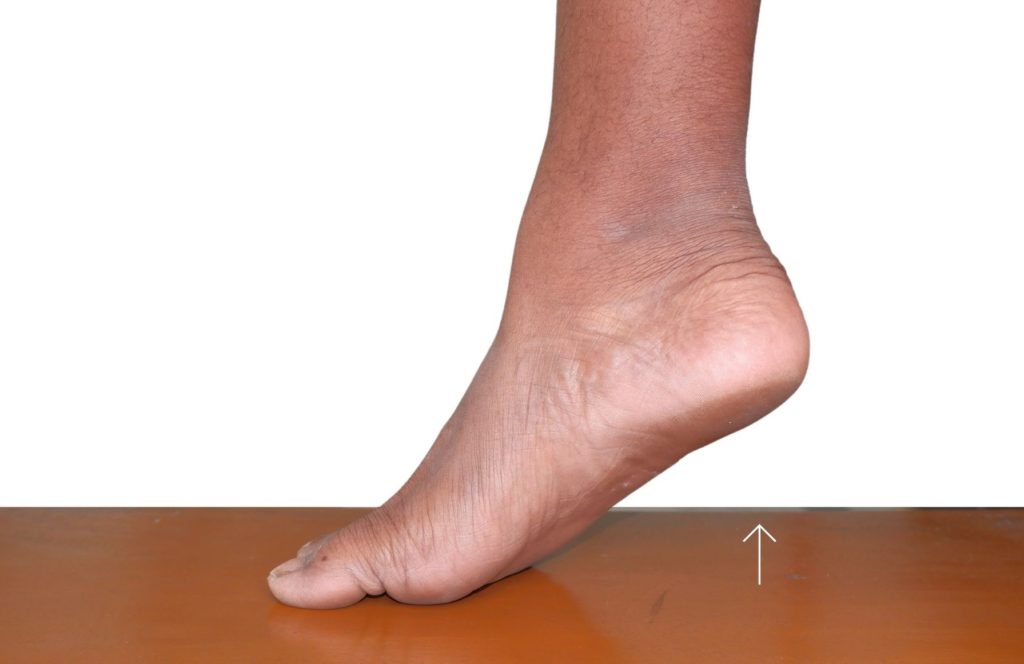
So our next exercise for Hallux valgus deformity in the foot is the heel-off exercise.
- This exercise is done sitting with feet flat on the floor.
- In this position, you raise your heels as high as possible, hold them for 5 seconds, and then lower down to the normal position.
- Again, raise your heel, hold it for 5 seconds, and lower it to the normal position.
- Repeat the exercises till you feel aching in your calf muscles or around the foot muscles, but 15 to 20 times should be the minimum reputation you should do.
4. Progression of the exercise
All these exercises just discussed were done in a sitting position; now, you have to progress with exercises and perform them in a standing position.
The exercise process would remain the same as above; the only change is that you must perform this exercise in a standing position. So initially, the exercise is performed in a standing position on both legs.
As we feel comfortable doing all the exercises standing on both feet, repeat them standing on a single foot.
While doing exercises in both legs, the weight is distributed evenly on both feet; by progressing to single-leg standing, we shift our whole body weight to a single foot, increasing the resistance to exercise.
Other non-operative treatment for bunion
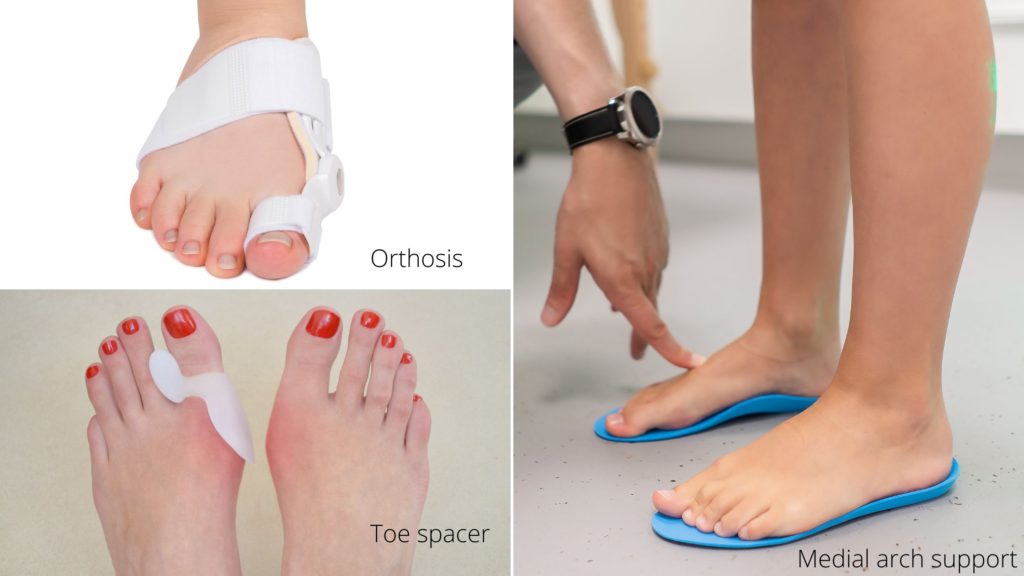
Other effective ways to manage Hallux valgus exist. These methods are not a replacement for exercises; they should be applied alongside them.
- Consider changing your footwear: As we discussed at the beginning of the article, pointed shoes can be one cause of bunions. So, if you wear such footwear, consider changing to a more accommodating one. We also discourage females from wearing high heels regularly.
- Orthosis for bunion: We also recommend orthosis, which helps pull and hold the leaning great toe outwards. You can use it even inside your shoes.
- Toe spreaders for bunion: Use a soft silicone gel toe spacer. Place it between the great and second toes and wear it inside the shoe.
- Medial arch support: The Hallux valgus is frequently associated with a flat foot. Medial arch support is one long-term management option for flat feet.
Foot surgery for Hallux valgus
If none of the conservative management works, then the only way is bunion surgery. Traditionally, corrective osteotomy is done when the part of the great toe bone is cut and realigned.
Bunion 3D surgery is currently in practice, also called bunion labiaplasty. Labiaplasty or 3D bunion surgery realigns the entire bone in 3D without cutting and shifting. There’s also 4d bunion surgery that involves minimal surgical intervention. You can visit their webpage for more information.
Keep reading: Shoe Inserts for Flat Feet: Types & How it Work
The author is a physiotherapist who has been practising for the last 17 years. He holds a Bachelor's in Physiotherapy (BPT) from SVNIRTAR (Swami Vivekananda National Institute of Rehabilitation and Research), one of the prestigious physiotherapy schools in India.
Whatever he learns dealing with his patient, he shares it with the world through blogs and e-books. He also owns a YouTube channel, "Sunit Physiotherapist" with over 8 lakh active subscribers. Here, he shares everything he gets to learn serving the patient.
